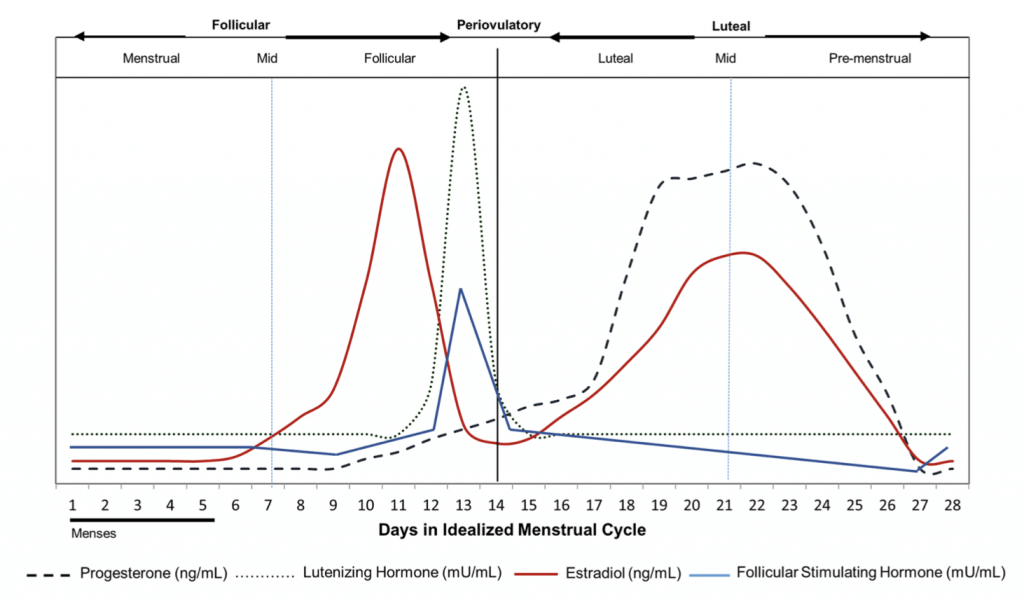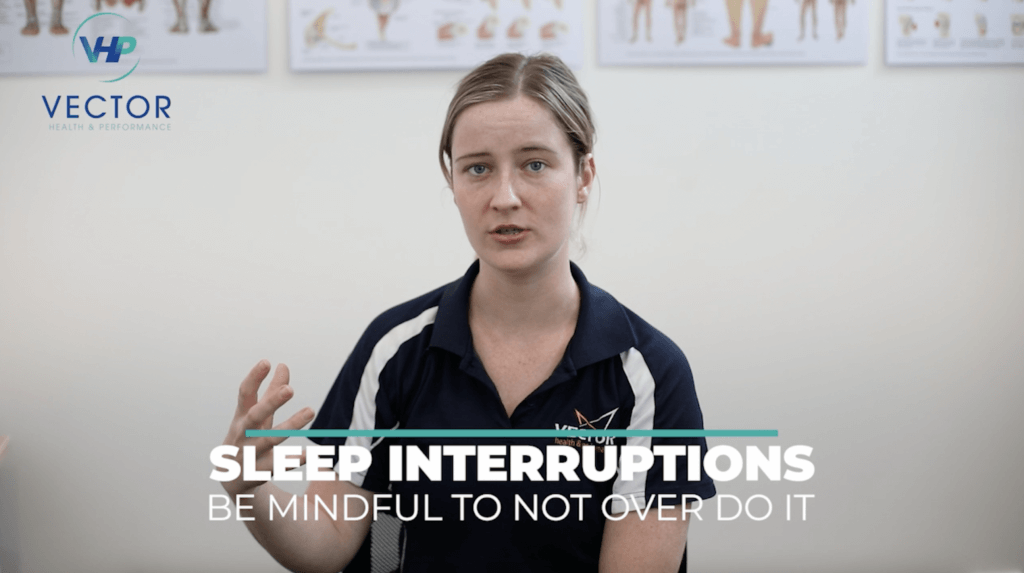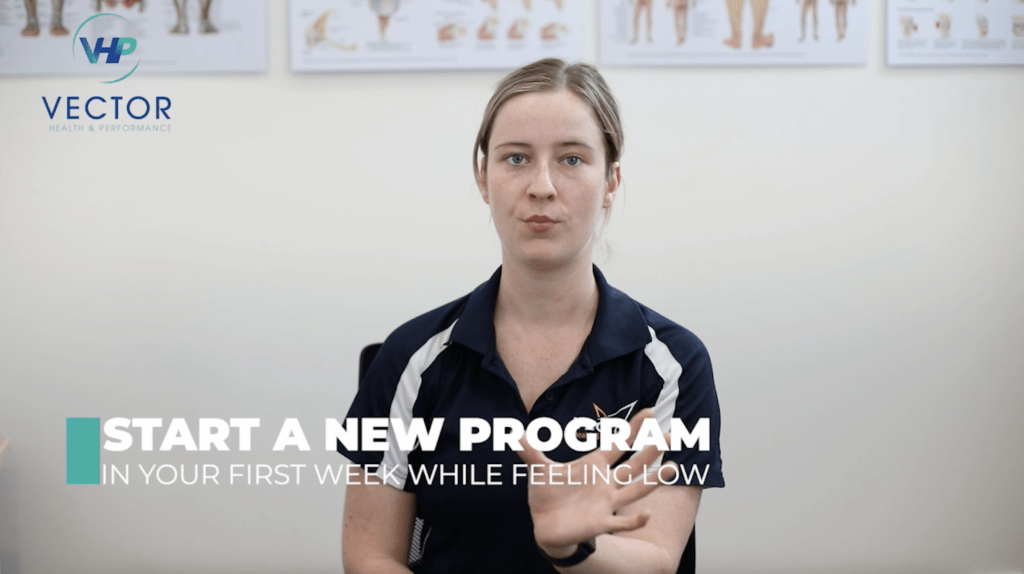Training around your Menstrual Cycle
As women, getting to know our bodies is an integral part of living to our best potential. Once we are in tune with our bodies, we can accomplish things we didn’t think possible. Each week during our cycle, we change moods, hormones, strength and mental headspace; why not use this to our advantage! In this video, Bridget Nash, Exercise Physiologist, explains this cycle and what happens to your body throughout a typical 28-day cycle.
* 28-day cycle is not always the case with women; everybody is different. This is just the standard for a menstrual cycle.*
Early Follicular (Week One) “The window of opportunity.”
- Low Hormone Phase
- Dominant Hormone: Oestrogen
- Drop-in oestrogen and progesterone (day three typically the lowest) cause the lining of your uterus to shed. This is your period.
- Low hormones state when we are most likely men and can train hard at high intensities.
- Low mood – low oestrogen – oestrogen has positive effects on dopamine and serotonin.
- Fuel at rest: carbohydrates
- Oestrogen
- Inhibits fat storage in certain areas
- Promotes intramuscular triglycerides (beneficial for energy during exercise)
- Increases fat-burning enzymes in muscles
- Activates a compound called AMPk, which enhances fat as fuel sources
- Increases muscle strength
- * you may feel fatigued for the first day or two of your period, but your strength and oestrogen will rise as your oestrogen levels do.
- Week 1: Start to increase weight/ sets or reps in the gym
Late Follicular (Week Two) Ovulation Part 1
- Dominant Hormone: Oestrogen
- The peak in strength.
- Sodium retention & oedema
- Increased reliance on fat as fuel, greatest ability to build muscle
Early Luteal (Week 3) Ovulation Part 2
- Dominant Hormone: Progesterone
- We ovulate and very quickly drop in estrogen and LH
- Insulin resistant, unstable blood glucose, leptin resistant, dopamine and serotonin low, moody.
- Progesterone starts to rise
- High hormone state
- Improves mood/sleep
- Increases core body temperature
- Increases resting metabolic rate
- Anti-inflammatory
- Impaired muscle synthesis and strength
- Insulin resistant
- Leptin resistant
- Unstable blood glucose
- Craving high-calorie food
- Higher metabolic rate
- Primed for fat storage
- Increased RMR and EE
- Odema
- Insomnia
- A surge in LH causes a steep drop in oestrogen and a slow rise in progesterone
- You may feel more sluggish after ovulation
- Middle of week 3 – extra hungry – increased metabolic rate, its okay to eat more in this time, but make sure you continue to eat well.
- Fuel at rest: fat
- Lower ability to build muscle
- Increased need for water
- Steady-state cardio – fat is used as fuel.
- Pay extra attention to warm up, technique and mobility.
- This is where your may experience PMS symptoms. Consider taking a step back from training intensity, and focus on skill & recovery work instead (de-load weights)
- Bloating
Late Luteal (Week 4)
- High Hormone Phase
- Dominant Hormone: Progesterone
- De-load weights.
With all of this being said, you know your body best, and some of these points may not relate to you personally! Use these as a guide to working out what training pattern works best for you to achieve the best results for your body! Any questions, please message us. We are happy to have a chat and see what we can do for you!




